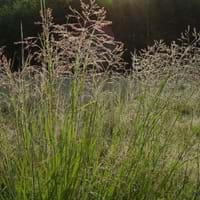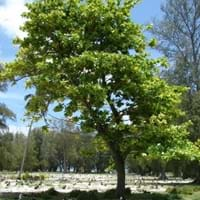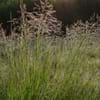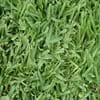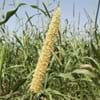Life Span
Perennial
Perennial
Type
Grass
Fruit, Perennial, Tree
Origin
North America, Canada, Mexico, China
Africa, Asia, Australia
Types
Not available
Not Available
Habitat
All sorts of environments
Subtropical climates, Tropical areas
USDA Hardiness Zone
5-9
Not Available
AHS Heat Zone
9 - 1
Not Available
Sunset Zone
1a, 1b, 2a, 2b, 3a, 3b, 4, 5, 6, 7, 8, 9, 10, 11, 14, 15, 16, 17, 18, 19, 20, 21, 22, 23
Not Available
Habit
Upright/Erect
Spreading
Flower Color
Orange, Purple
Non Flowering Plant
Flower Color Modifier
Bicolor
Not Available
Fruit Color
Brown, Light brown
Dark Brown, Green
Leaf Color in Spring
Blue Green, Steel Blue
Dark Green
Leaf Color in Summer
Light Green
Green
Leaf Color in Fall
Blue Green, Steel Blue
Red
Leaf Color in Winter
Tan, Sandy Brown
Red
Leaf Shape
Orbicular
Broadly Ovate
Plant Season
Spring, Summer, Fall, Winter
Summer
Sunlight
Full Sun, Partial Sun
Full Sun, Partial Sun
Type of Soil
Clay, Loam, Sand
Loam
The pH of Soil
Acidic, Neutral, Alkaline
Acidic, Neutral
Soil Drainage
Average
Well drained
Bloom Time
Early Summer, Summer, Late Summer
Summer
Tolerances
Pollution, Drought, Soil Compaction
Dry soil
Where to Plant?
Container, Ground, Pot
Container, Ground
How to Plant?
Seedlings
Seedlings, Stem Planting
Plant Maintenance
Medium
Low
Watering Requirements
Average Water Needs
Needs less watering
In Summer
Lots of watering
Ample Water
In Spring
Moderate
Moderate
In Winter
Average Water
Average Water
Soil pH
Acidic, Neutral, Alkaline
Acidic, Neutral
Soil Type
Clay, Loam, Sand
Loam
Soil Drainage Capacity
Average
Well drained
Sun Exposure
Full Sun, Partial Sun
Full Sun, Partial Sun
Pruning
Remove damaged leaves, Remove dead branches, Remove dead leaves
Remove dead branches, Remove dead leaves
Fertilizers
All-Purpose Liquid Fertilizer
All-Purpose Liquid Fertilizer
Pests and Diseases
Aphids, Rust, Spider mites
Not Available
Plant Tolerance
Drought
Dry soil
Flower Petal Number
Single
Not Available
Foliage Texture
Fine
Fine
Foliage Sheen
Matte
Glossy
Aesthetic Uses
Not Available
Showy Purposes
Beauty Benefits
Not Available
Making cosmetics
Environmental Uses
Air purification, Biodegradable plastics production, Soil conservation
Air purification, Food for birds
Medicinal Uses
Not Available
Energy, Minerals, ß-carotene, Vitamin A, Vitamin C, Vitamin E
Part of Plant Used
Not Available
Fruits
Other Uses
Animal Feed, Used to feed livestock
Grown for shade, Used As Food
Used As Indoor Plant
No
No
Used As Outdoor Plant
Yes
Yes
Garden Design
Edging, Feature Plant, Foundation, Mixed Border, Wildflower
Edible, Fruit Tree
Botanical Name
PANICUM virgatum 'Dallas Blues'
Terminalia catappa
Common Name
Dallas Blues Switchgrass, Switchgrass
Bengal almond, country almond, false kamani, Indian almond, Malabar almond, sea almond, tropical almond
In Hindi
Dallas Blues Grass
जंगली बादाम
In German
Dallas Blues Grass
Katappenbaum, Seemandelbaum, Indische Mandel
In French
Dallas Blues Grass
Badamier
In Spanish
Dallas azules Hierba
almendro malabar, almendro de los trópicos, almendrón, falso kamani, Egombegombe
In Greek
Dallas Blues Grass
Ινδικό αμύγδαλο
In Portuguese
Dallas azuis da grama
amêndoa, amendoeira, castanheira, anoz, árvore-de-anoz, castanholeira, coração-de-nego, castanhola, sete-copas, chapéu-de-sol, guarda-sol, terminália, figueira-da-índia
In Polish
Dallas Blues Grass
Migdałecznik właściwy
In Latin
Dallas Blues Grass
inti almont
Phylum
Magnoliophyta
Magnoliophyta
Class
Liliopsida
Magnoliopsida
Family
Poaceae
Combretaceae
Clade
Angiosperms, Commelinids, Monocots
Angiosperms, Eudicots, Rosids
Tribe
Not Available
Not Available
Subfamily
Panicoideae
Not Available
Season and Care of Dallas Blues Grass and Indian Almond
Season and care of Dallas Blues Grass and Indian Almond is important to know. While considering everything about Dallas Blues Grass and Indian Almond Care, growing season is an essential factor. Dallas Blues Grass season is Spring, Summer, Fall and Winter and Indian Almond season is Spring, Summer, Fall and Winter. The type of soil for Dallas Blues Grass is Clay, Loam, Sand and for Indian Almond is Loam while the PH of soil for Dallas Blues Grass is Acidic, Neutral, Alkaline and for Indian Almond is Acidic, Neutral.
Dallas Blues Grass and Indian Almond Physical Information
Dallas Blues Grass and Indian Almond physical information is very important for comparison. Dallas Blues Grass height is 120.00 cm and width 60.00 cm whereas Indian Almond height is 500.00 cm and width 600.00 cm. The color specification of Dallas Blues Grass and Indian Almond are as follows:
Dallas Blues Grass flower color: Orange and Purple
Dallas Blues Grass leaf color: Blue Green and Steel Blue
Indian Almond flower color: Non Flowering Plant
- Indian Almond leaf color: Dark Green
Care of Dallas Blues Grass and Indian Almond
Care of Dallas Blues Grass and Indian Almond include pruning, fertilizers, watering etc. Dallas Blues Grass pruning is done Remove damaged leaves, Remove dead branches and Remove dead leaves and Indian Almond pruning is done Remove dead branches and Remove dead leaves. In summer Dallas Blues Grass needs Lots of watering and in winter, it needs Average Water. Whereas, in summer Indian Almond needs Ample Water and in winter, it needs Average Water.
